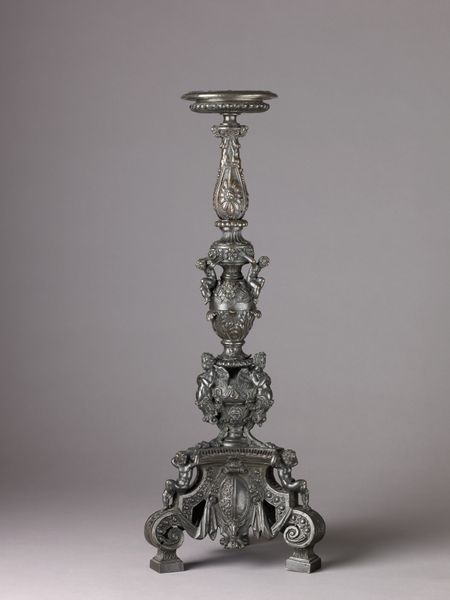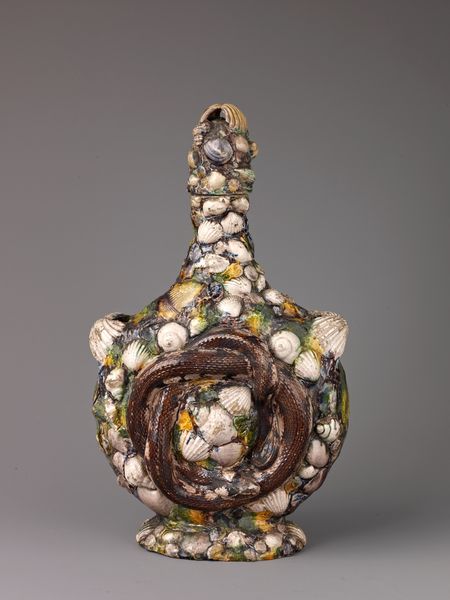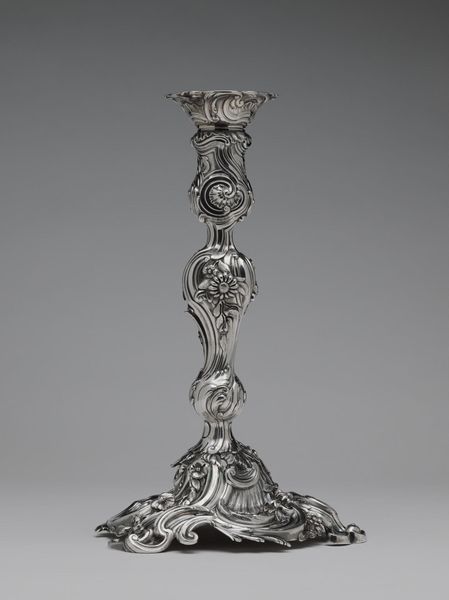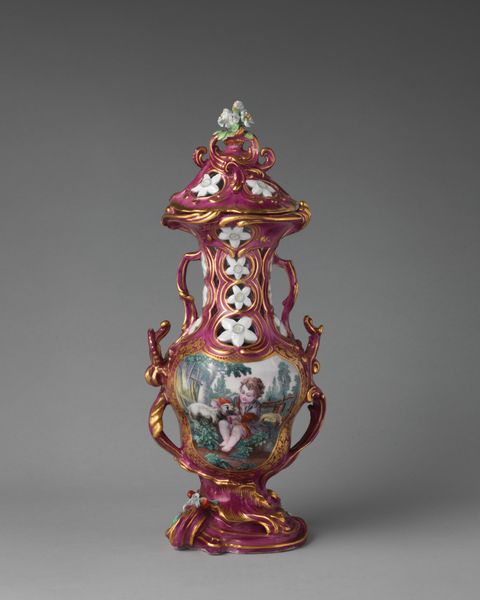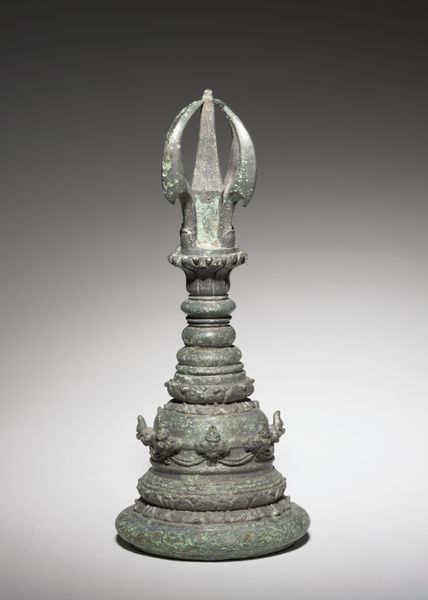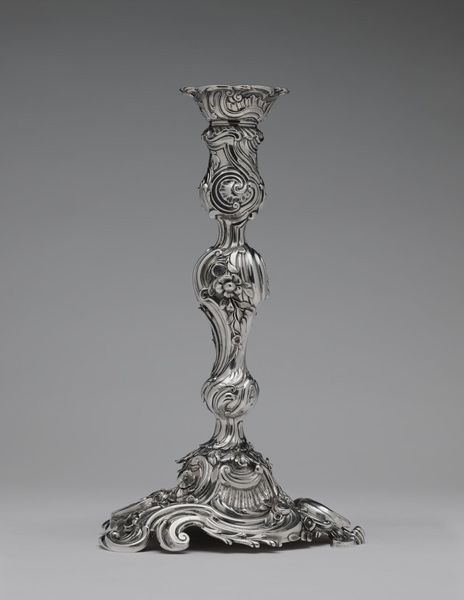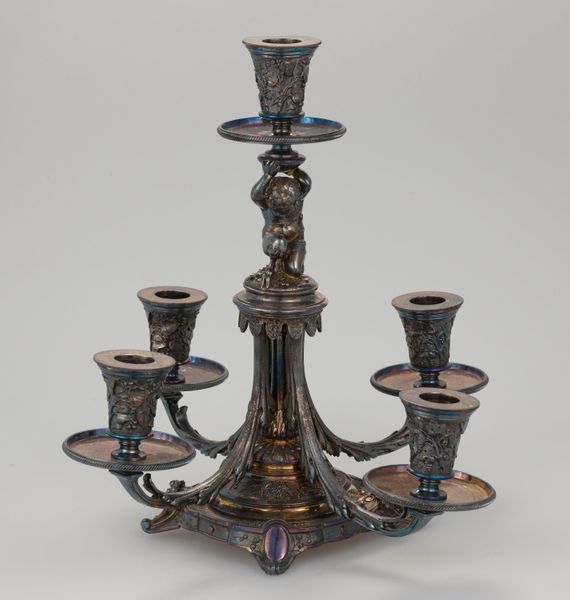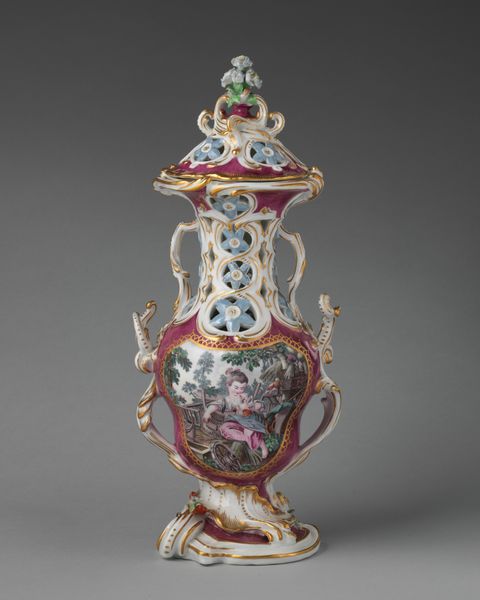
mixed-media, metal, gold, sculpture, enamel
#
mixed-media
#
baroque
#
metal
#
gold
#
sculpture
#
enamel
#
decorative-art
Dimensions: Height: 10 1/8 in. (25.7 cm)
Copyright: Public Domain
Editor: Here we have an exquisite Baroque Candlestick, crafted sometime between 1655 and 1685. It’s a mixed-media sculpture composed of gold, metal, and enamel. It’s incredibly ornate, a sort of architectural object. What are your initial thoughts about the labor involved? Curator: Considering this object from a materialist perspective requires us to think about its production. Look closely. Can you imagine the numerous skilled artisans involved in each stage of creation? Editor: Definitely! I'm picturing goldsmiths, enamellers... crafting all the various components separately. The level of skill…! Were they considered artists or craftsmen? Curator: That’s a vital question! The traditional art historical narrative often separates 'high art' from craft, but this piece challenges that divide. Its existence depended upon an entire workshop economy with divisions of labor. It served a purpose and held social meaning tied to class, display, and, indeed, conspicuous consumption. Editor: So it represents more than just aesthetic beauty? It's a record of socio-economic forces at work. How would access to specific materials impacted their trade routes? Curator: Precisely. Think about the origins of the gold, the source of the enamel pigments. Trace the trade routes. Who benefitted? Who was exploited in obtaining these materials and producing this object? Editor: I hadn’t considered the ethics tied to an object of such beauty. Looking at it now, I realize there’s an untold history within the candlestick itself! Thanks for the insights. Curator: Indeed! The materials, process, and socio-economic context embedded within a "simple" decorative item, transforms our perception entirely.
Comments
No comments
Be the first to comment and join the conversation on the ultimate creative platform.
